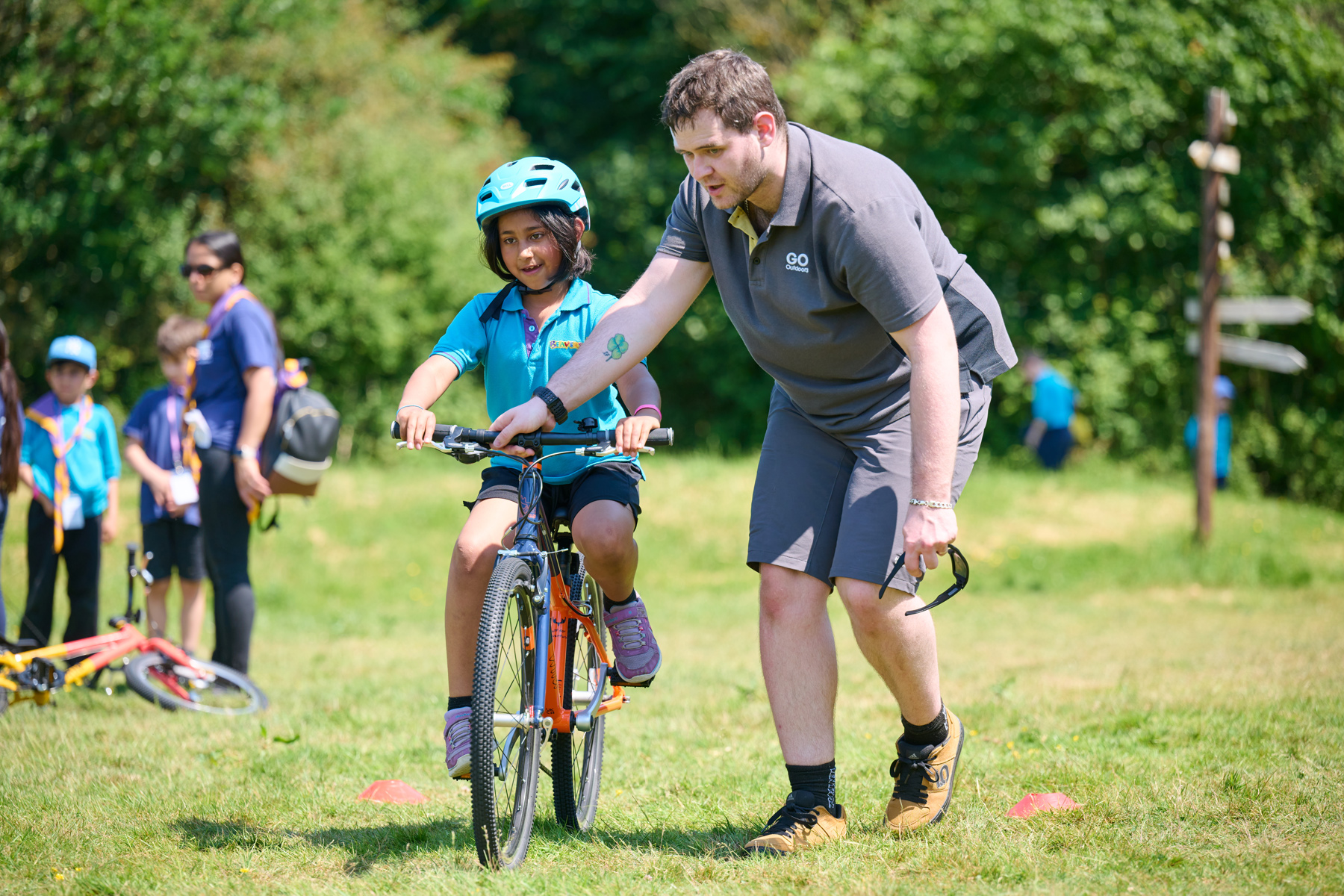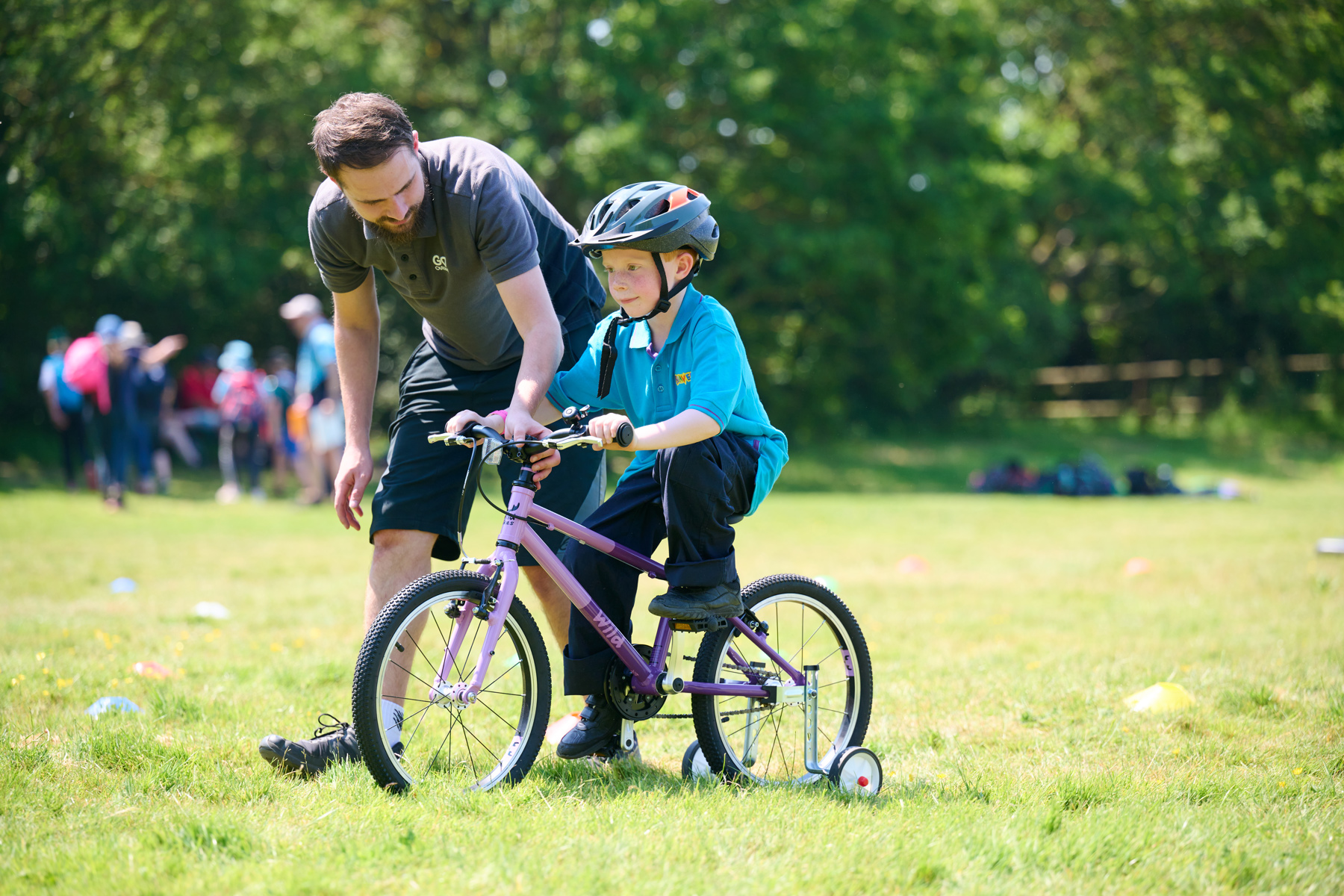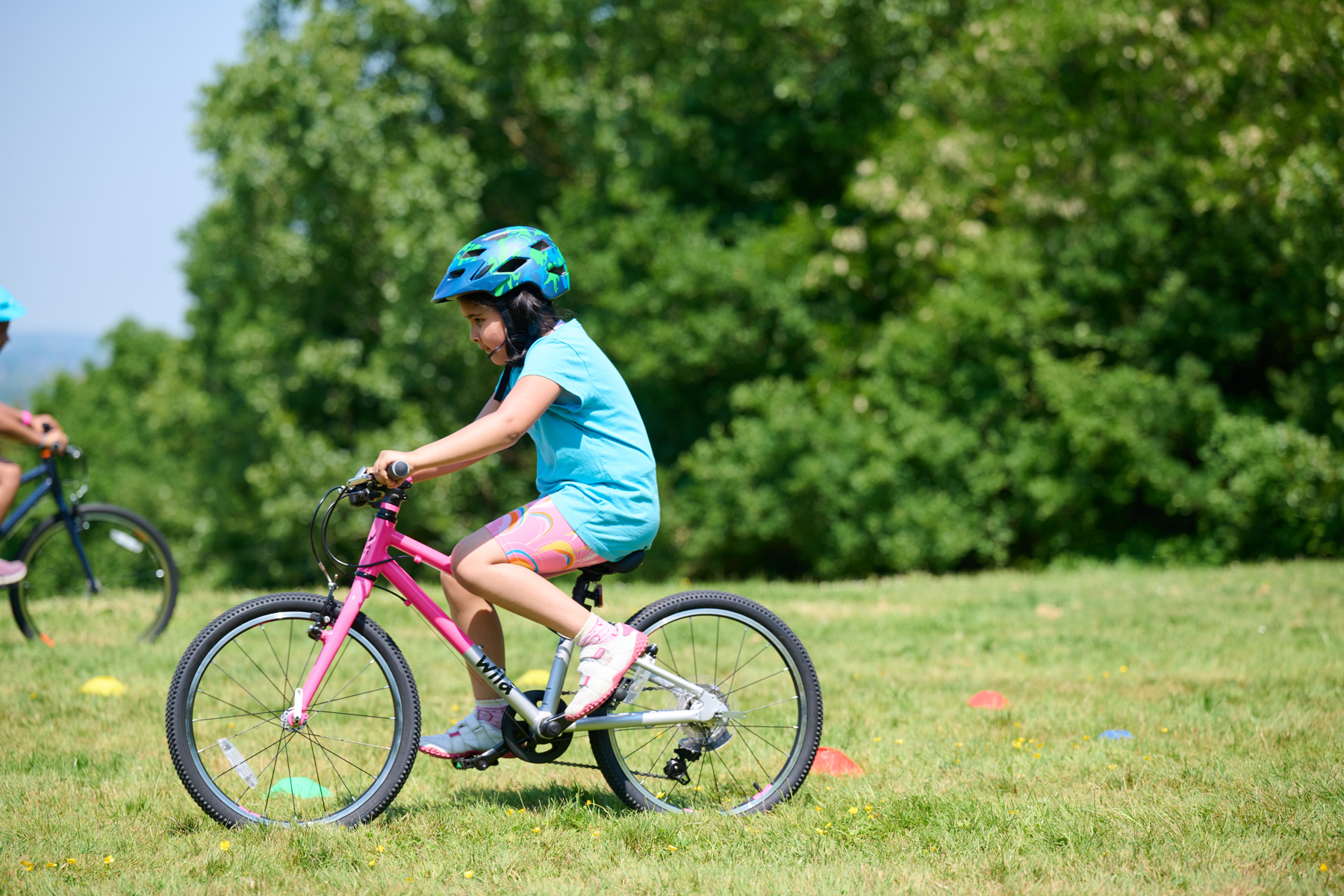How to stay safe cycling in autumn and winter
Now our daylight hours are shorter, it’s even more important to stay safe when you’re cycling. Here are our top safety tips for cycling in dark and cold weather.
Autumn is now here, along with a chill in the air, frost on the ground and darker days. Especially if you ride a bike, it’s important to be extra careful when you’re out and about.
With our partners GO Outdoors, we’ve created some top cycling tips for the autumn and winter months so you can keep cycling all year round.
Take a look at our guidance on Cycling in Scouts, including Road Cycling and Night Riding.

1. You must use bike lights and reflectors
Before setting out on your next ride, make sure your bike has lights set up and check they’re working.
Not only do bike lights help your visibility, but you’re also legally required to have them when you’re out between sunset and sunrise. Even if you think you might not be riding in the dark, it’s much better to be prepared – you never know when your plans might change.
At night, you legally must have and use white front and red rear lights, as well as a red rear reflector and amber pedal reflectors. White front reflectors and spoke reflectors will also help you to be seen.
Flashing lights are permitted, but it’s recommended to use a steady front lamp in areas without street lighting.
2. Check your brakes and tyres
No matter the season, you should regularly check that both bike brakes are working properly. It's important to get them fixed before you head out on your next ride if they’re not working as well as usual.
Checking your brakes is especially important during autumn and winter, when there might be frost or ice on the ground. When it’s more slippery, it takes longer for us to brake and come to a stop, putting us at more risk of a collision.
Using both brakes is much safer than using just one, as you might skid or go over your handlebars.
Remember to also check your tyres have enough tread to help your wheels grip and brake safely. You should change them if they’re looking a little worn. The tread on tyres can help with grip when it’s damp, wet or muddy.
3. Put on some reflective/luminous clothing
It’s always important to be visible as possible to all road users, so throw on some reflective and luminous clothing.
Luminous, bright colours can make it much easier for you to be seen in the day, with reflective high-visibility clothing helping you be seen at night. There are plenty of different high-visibility items to choose from, including jackets, helmets, rucksacks, reflective bands and gloves.
Gloves in colder weather are a great addition too, because keeping your hands warm means you’re always able to use your brakes, gears and handlebars easily.
4. Change your road position
If you move out slightly further when you’re passing a junction, you’ll be able to see better, and drivers will have more chance of seeing you. Keep an eye on other drivers and make sure they’ve seen you before you make a turn.

5. Make your signals visible
Making visible signals, such as indicating a turn, is where using high-visibility gloves can be useful, as it's easier for the hand signal to be seen. It’s important to make your signals extra clear, longer and visible in darker conditions. You can try to stick your arm out further, signal more in advance and wear something reflective to help make your signal clearer.
6. Be extra wary of turning vehicles
Always keep an eye out for turning vehicles, especially in the dark. Lots of collisions happen when a driver is turning left and there’s a cyclist alongside them. Even if the driver isn’t indicating, make sure you approach with caution and hang back until you’re completely sure which way they’re turning. Let them go ahead before you proceed – don’t try to undertake them.
7. Always follow the Highway Code
When the weather conditions change, it’s a great time to remind yourself of the Highway Code. Follow all stop and give way signs, and always stop at red lights.
8. Use cycle lanes and joint cycleways
It’s always best to use well-lit cycle lanes or joint pedestrian/cyclists pavements if the area has them and you feel safe to do so. They’re usually easier to ride on, as they’re fewer obstructions or obstacles, such as moving traffic, potholes and parked cars. Remember to always give way to pedestrians on shared cycleways.
Cycle away with our GO Outdoors activities
Check out these exciting cycling activities, with thanks to GO Outdoors. You could even work towards your Cyclist Activity Badge. Always remember to safely plan and risk assess any activities you choose.
See our GO Outdoors supported badges and activities
Staying safe cycling in Scouts
Take a look at our guidance on Cycling in Scouts, including Road Cycling and Night Riding.
All Scout activities must be safely managed. Always use the safety checklist to help you plan and risk assess your activity. You must complete a thorough risk assessment and take appropriate steps to reduce risk.
Always get approval for the activity and have suitable supervision and an InTouch process. You may need parents and carers to help.
There are some extra things to consider when running a bike ride in Scouts, such as:
Have a safe distance between bikes: Make sure a safe distance is left between bikes
Have adults throughout the group: Have responsible adults at the front, back and at regular intervals throughout the group.
Know the Highway Code: Activity leaders should make sure they have up-to-date knowledge of the Highway code and the Safer Highway Code for Cyclists.
Check for permits: You may need an Adventurous Activity Permit for the terrain you want to cycle in.
Wear protective equipment and high visibility items: You must wear helmets and high-visibility items, such as jackets. You should wear elbow and knee pads as defined by your risk assessment. Make sure you have enough reflective clothing and spare PPE for everyone who’s going to be taking part.
Inform about where to meet and what to bring: Make sure everyone knows the date, what to wear, where to meet, what to bring (such as water and snacks), and what time drop off and pick up is.
Avoid loose clothing: People should avoid clothes that may get tangled in the chain, or in a wheel or may obscure your lights when you are cycling.
Check lights, reflectors, seats and tyres: Remind everyone to make sure they have clean, working front and rear lights, clean reflectors, pumped-up tyres and a correctly fitted seat. Bikes and riders must have sufficient lights and reflective equipment. Take a look at more information on regulations about lights, such as how bright they need to be.
Choose an appropriate route: Choose a suitable, safe and accessible route. Make sure routes are well-lit. Everyone must be able to see others and move around the area safely.
Consider the weather: Don’t forget to check the forecast and be prepared for it to change.
Pack first aid kits: You’ll need more than several first aid kits, repair kits and sets of spare lights to be distributed between responsible adults on the ride, as well as a clear way to communicate with the group.
Have a briefing: Always brief young people on safety around roads and expected behaviour. Make sure everyone understands what they need to do while riding to keep themselves and their group safe. Remember to have regular breaks, know how many will be out on your ride and have regular headcount throughout the ride.
Borrow bikes to include everyone: Ask about borrowing bikes for those who don’t have one from local cycling clubs, repair shops and rental services.
Cycling